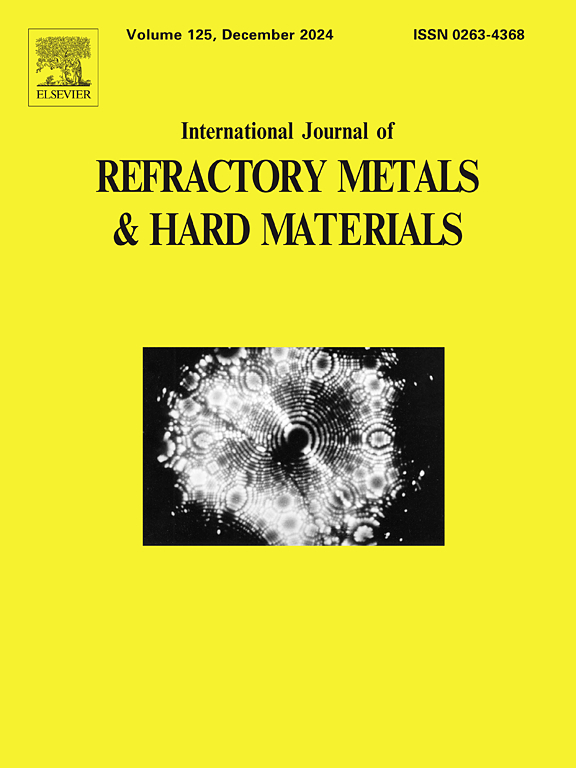过氧钨酸喷雾热解制备球形三氧化钨
IF 4.2
2区 材料科学
Q2 MATERIALS SCIENCE, MULTIDISCIPLINARY
International Journal of Refractory Metals & Hard Materials
Pub Date : 2025-05-03
DOI:10.1016/j.ijrmhm.2025.107215
引用次数: 0
摘要
本文提出了一种短流程、环保的过氧钨酸溶液制备球形氧化钨粉的方法,并对喷雾热解的影响因素及热解机理进行了研究。实验结果表明,不同浓度的过氧钨酸对液滴雾化效率没有显著影响,但高浓度溶液中WO3越多,液滴形成的颗粒越粗。液滴在180°C时均匀收缩,产生较小的颗粒,而在300°C时促进了多孔结构的形成。快速载气速度(120 L/min)可诱导颗粒粘附和二次颗粒的产生,但也有利于更细颗粒的收集。此外,超声波频率的增加与热解产物粒度的减小有关。在400℃低温煅烧条件下,在不改变颗粒形貌的情况下,可以得到固体球状单斜三氧化钨。本文提出了一种有前途的解决方案,以解决传统钨精炼中氨氮污染和工艺复杂性的挑战。本文章由计算机程序翻译,如有差异,请以英文原文为准。
Preparation of spherical tungsten trioxide by spray pyrolysis of peroxotungstic acid
This paper proposes a short-process, environmentally friendly approach for preparing spherical tungsten oxide powder using peroxotungstic acid solution, and investigates the factors influencing the spray pyrolysis, as well as the underlying pyrolysis mechanism. The experimental results demonstrate that varying the concentration of peroxotungstic acid did not significantly affect droplet atomization efficiency, but more WO3 led to the formation of coarser particles in a high-concentration solution. Droplets underwent uniform contraction at l80 °C, yielding smaller particles, whereas the formation of porous structures was promoted at 300 °C. Rapid carrier gas velocity (120 L/min) induced particle adhesion and the generation of secondary particles, yet it also facilitated the collection of finer particles. Furthermore, an increase in ultrasonic frequency correlated with a reduction in the particle size of the pyrolysis product. Solid spherical monoclinic tungsten trioxide could be obtained through low-temperature calcination at 400 °C without altering the particle morphology. This paper presents a promising solution to address the challenges of ammonia nitrogen pollution and process complexity in conventional tungsten refining.
求助全文
通过发布文献求助,成功后即可免费获取论文全文。
去求助
来源期刊
CiteScore
7.00
自引率
13.90%
发文量
236
审稿时长
35 days
期刊介绍:
The International Journal of Refractory Metals and Hard Materials (IJRMHM) publishes original research articles concerned with all aspects of refractory metals and hard materials. Refractory metals are defined as metals with melting points higher than 1800 °C. These are tungsten, molybdenum, chromium, tantalum, niobium, hafnium, and rhenium, as well as many compounds and alloys based thereupon. Hard materials that are included in the scope of this journal are defined as materials with hardness values higher than 1000 kg/mm2, primarily intended for applications as manufacturing tools or wear resistant components in mechanical systems. Thus they encompass carbides, nitrides and borides of metals, and related compounds. A special focus of this journal is put on the family of hardmetals, which is also known as cemented tungsten carbide, and cermets which are based on titanium carbide and carbonitrides with or without a metal binder. Ceramics and superhard materials including diamond and cubic boron nitride may also be accepted provided the subject material is presented as hard materials as defined above.

 求助内容:
求助内容: 应助结果提醒方式:
应助结果提醒方式:


